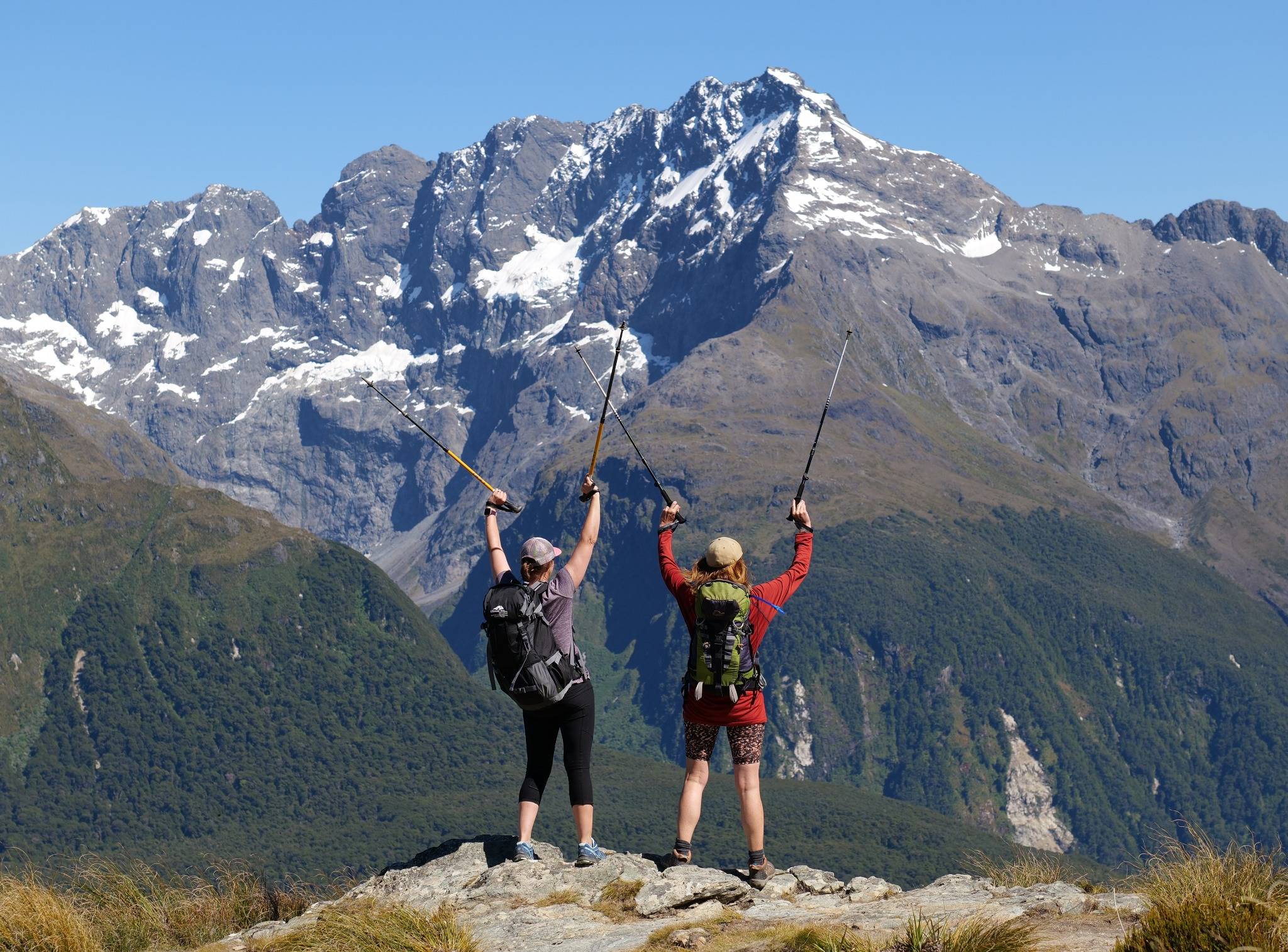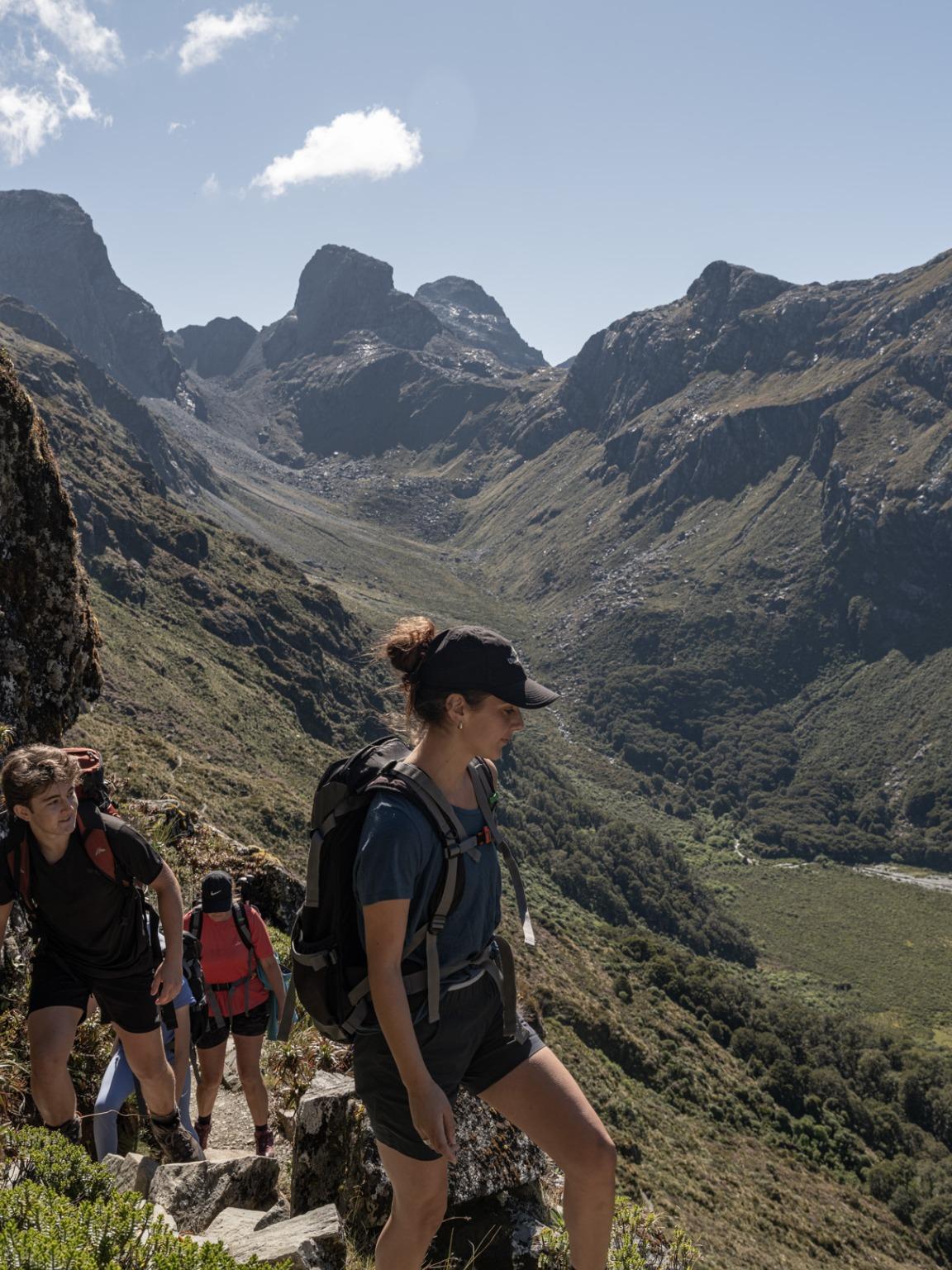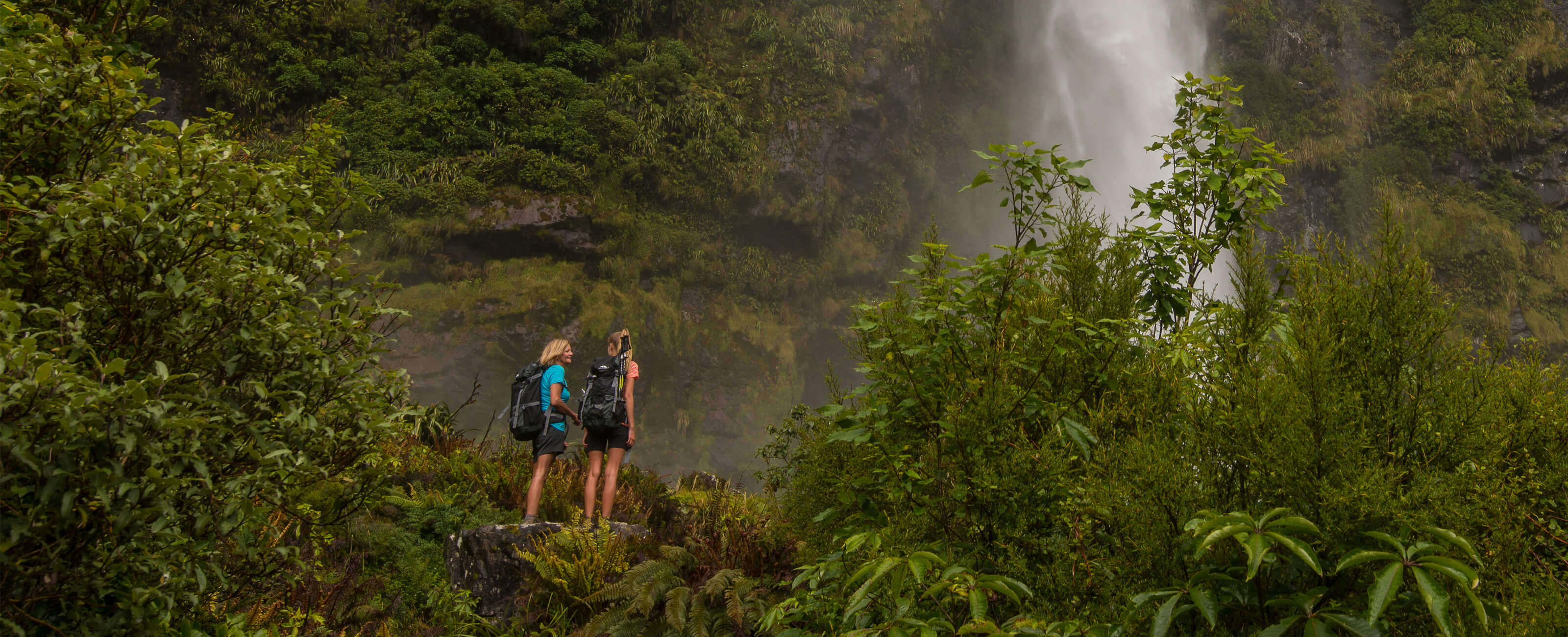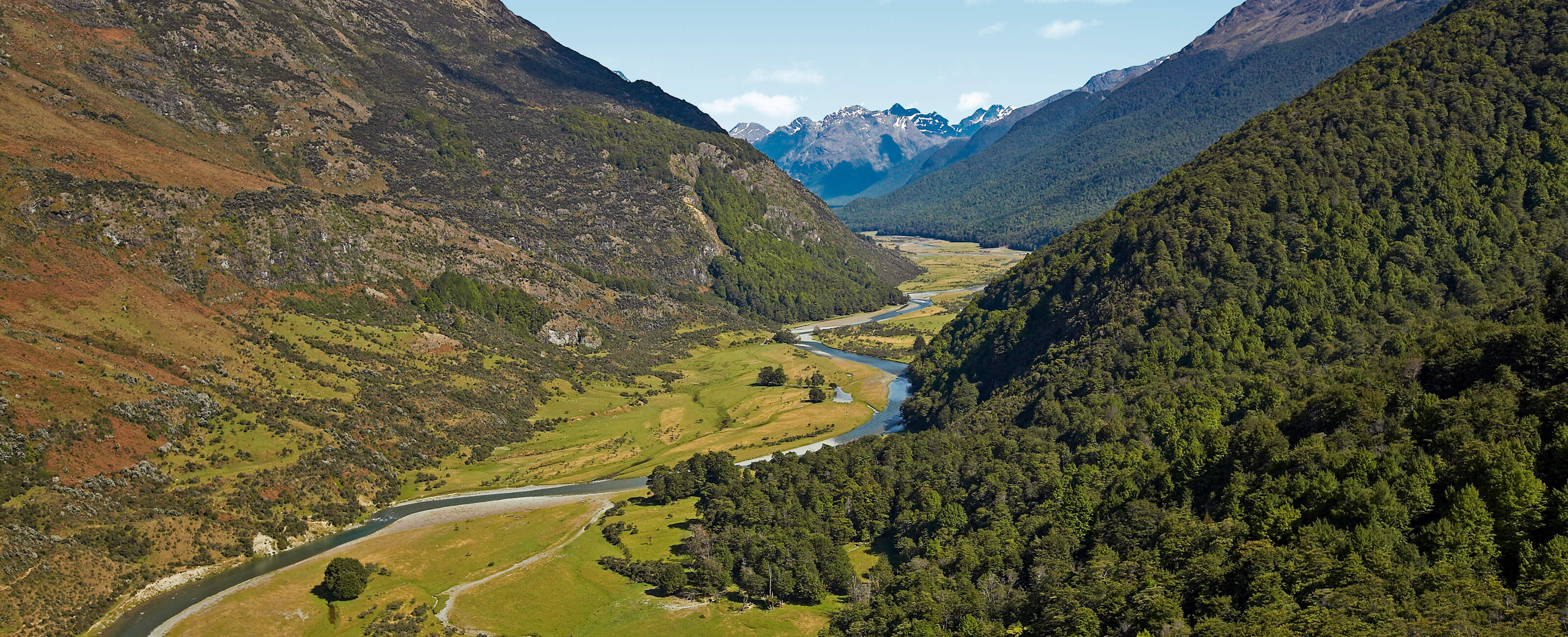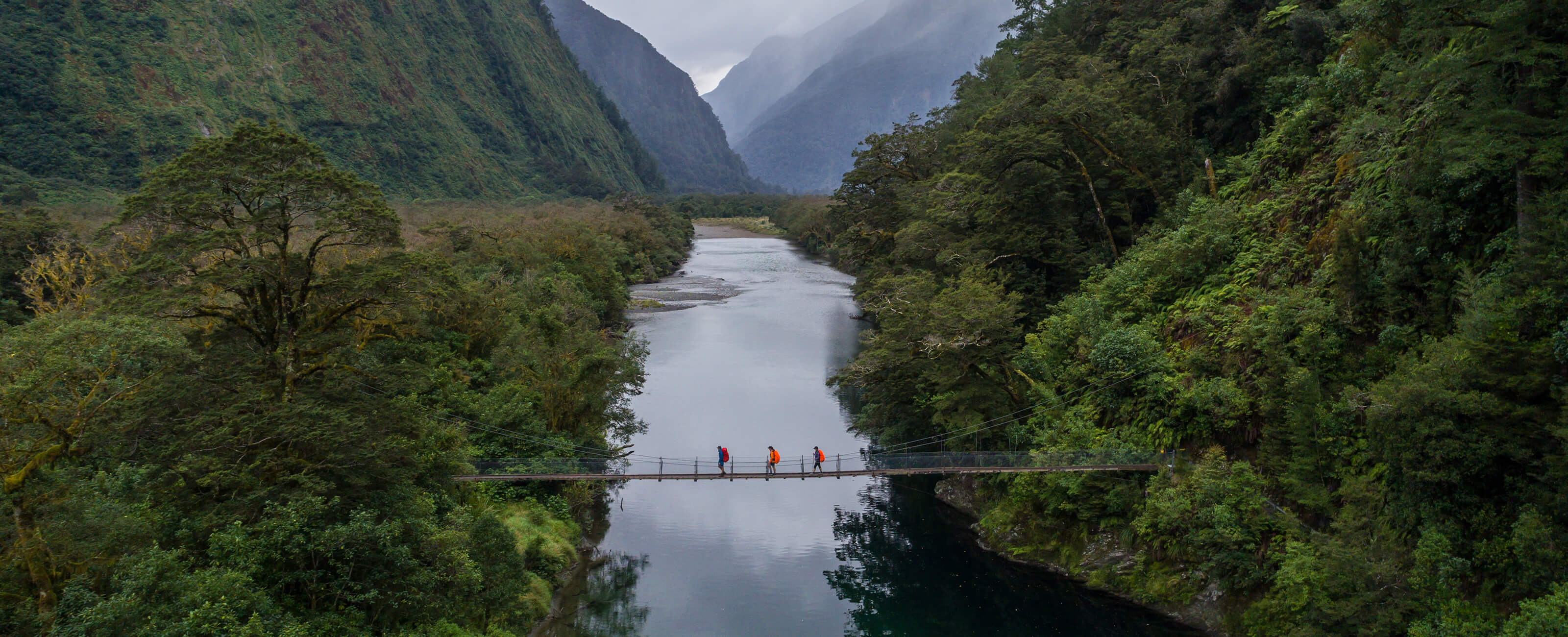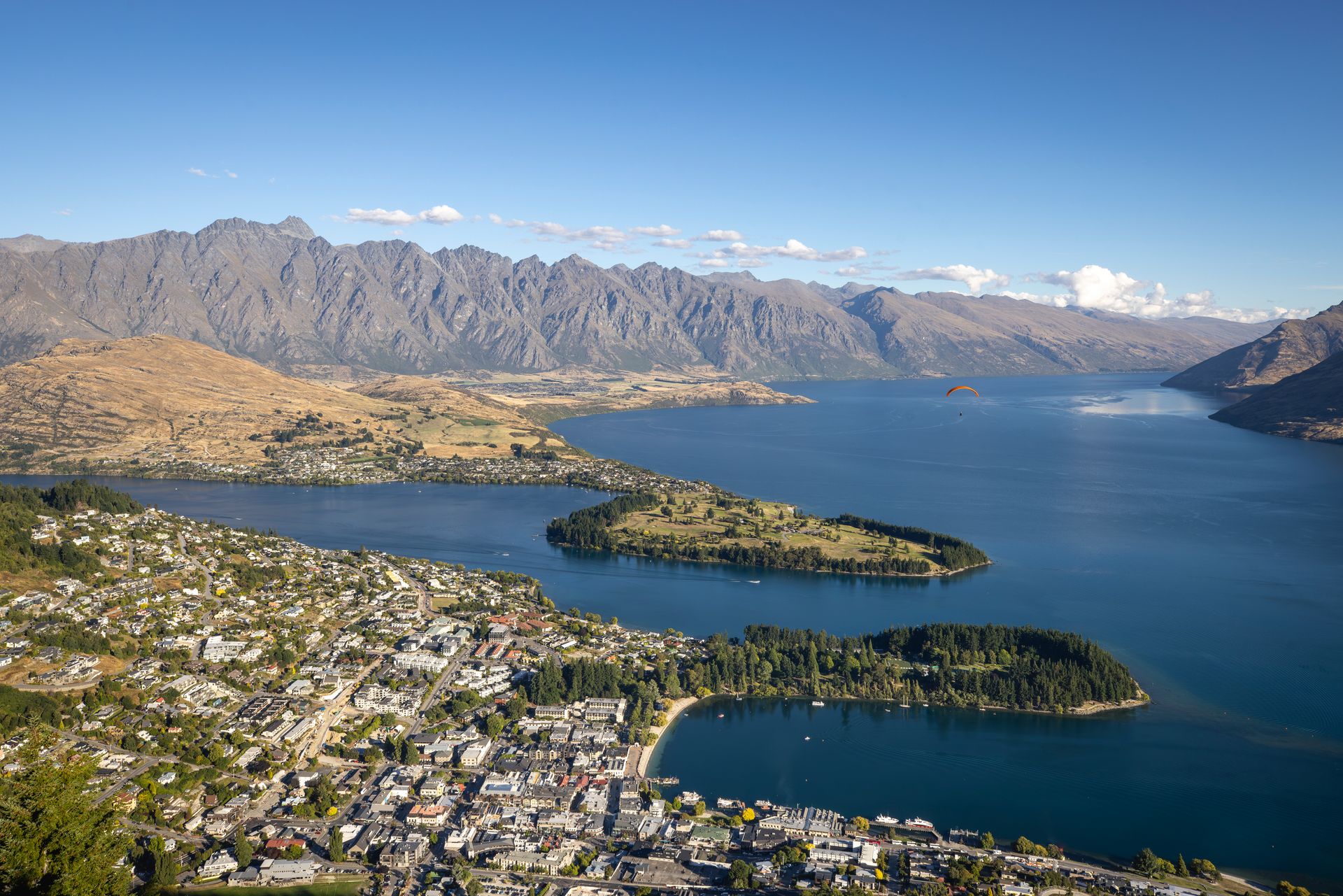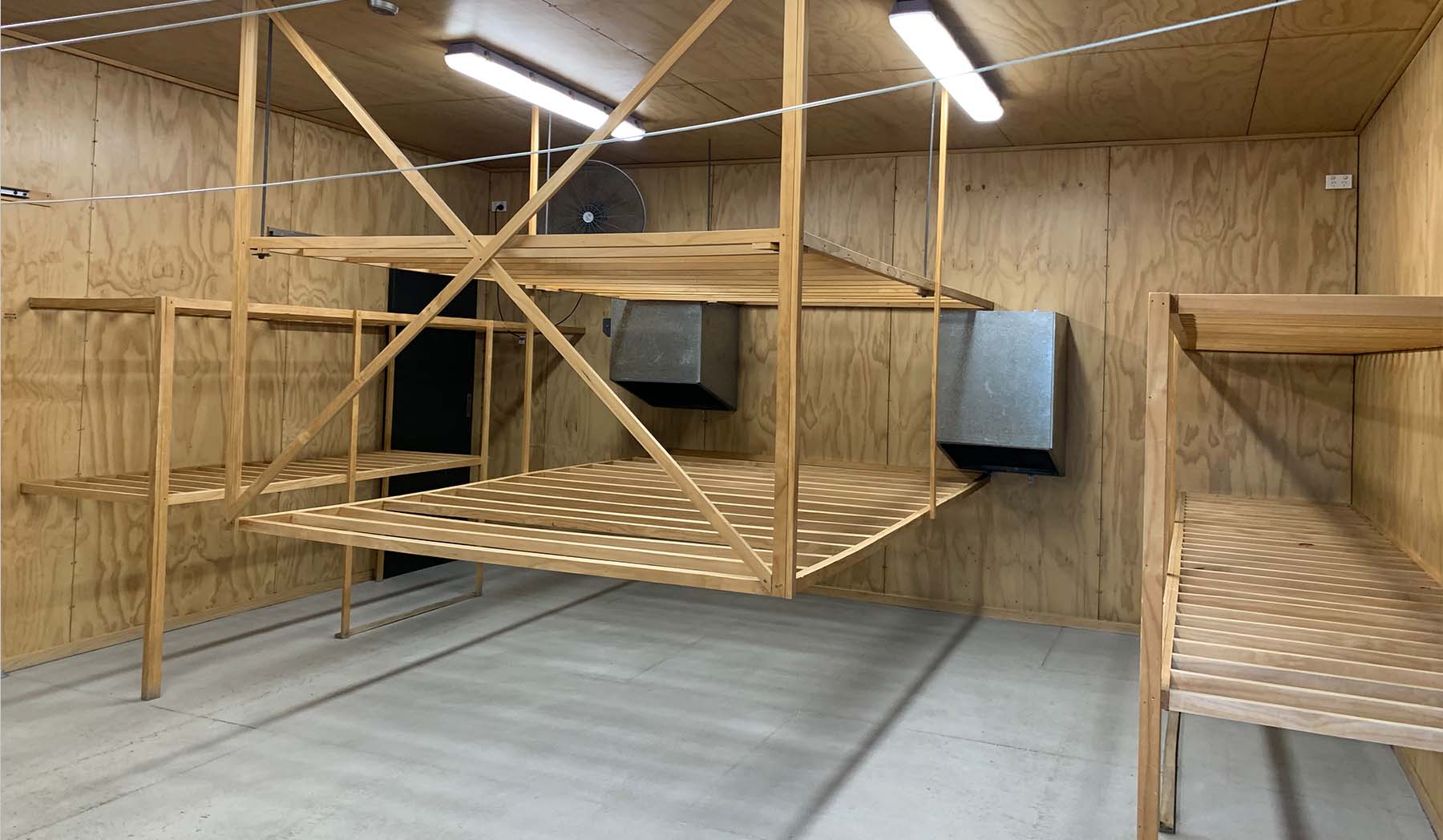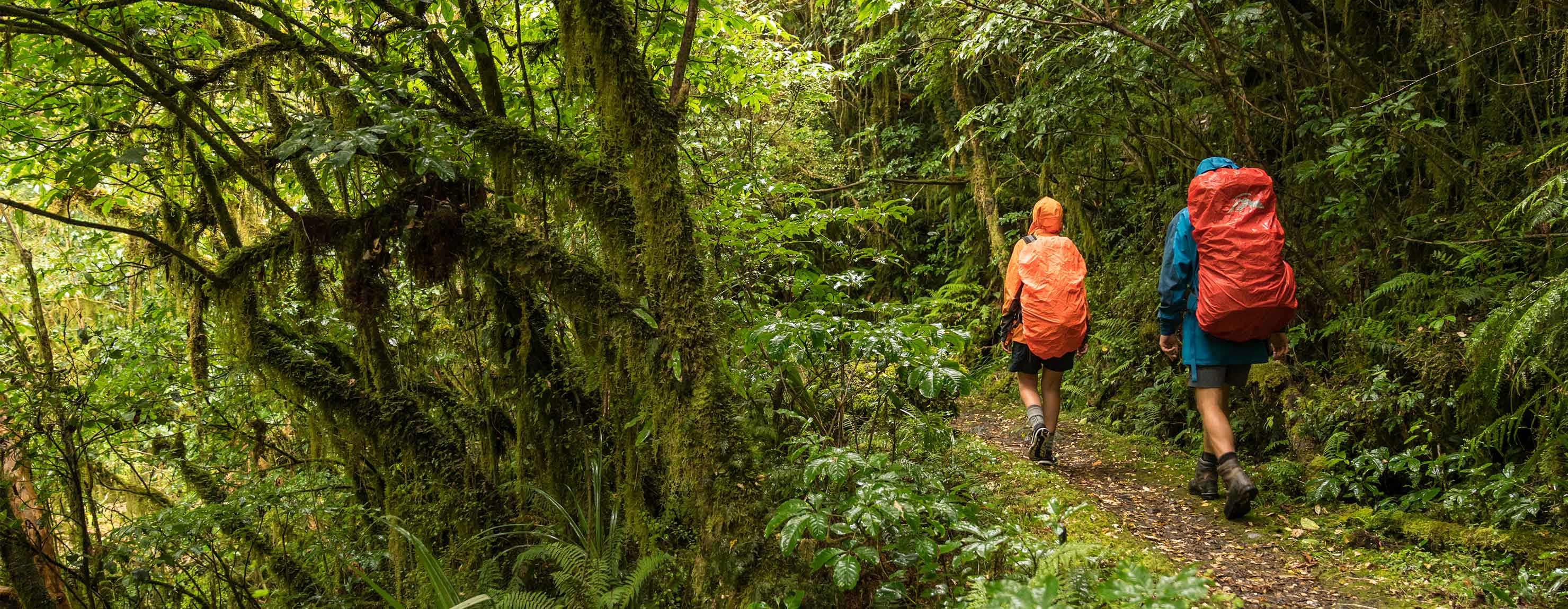Hike Preperation
Train in the footwear (and socks) that you intend to walk in. This will ensure that they are adequately broken in and will lessen the likelihood of getting blisters.
It is highly recommended to train while carrying a small backpack, increasing the weight carried until you are carrying 7-10kg.
If you plan to use walking poles during your trip (and we strongly recommend you do), it is a good idea to also use them during your training.
Walk in the rain during training if possible. Our tracks experience frequent rain events, so it makes sense to get used to it!
If possible, you should be getting out for two or three walks each week in the lead up to your trip.
As your trip gets closer, make sure you go for walks on consecutive days (just like you will do on the trip) to see how your body recovers.
Hydration
Hydration is extremely important, both during training and on track. Always take water with you on walks and take regular sips to stay hydrated. Keeping up your fluid intake after training will also help your recovery times.
Niggles or Injuries
If you get any niggles, such as sore joints, make sure you give your body time to recover before your next training session. Having an icepack in the freezer will help to settle down inflamed joints and muscles. This will speed up recovery.
Learning some basic stretches, especially for your calf muscles, quadriceps, hamstrings and hips will help keep your legs moving freely.
Don't push yourself too hard too soon; build up the distances, weight carried and speed of walking over time.

